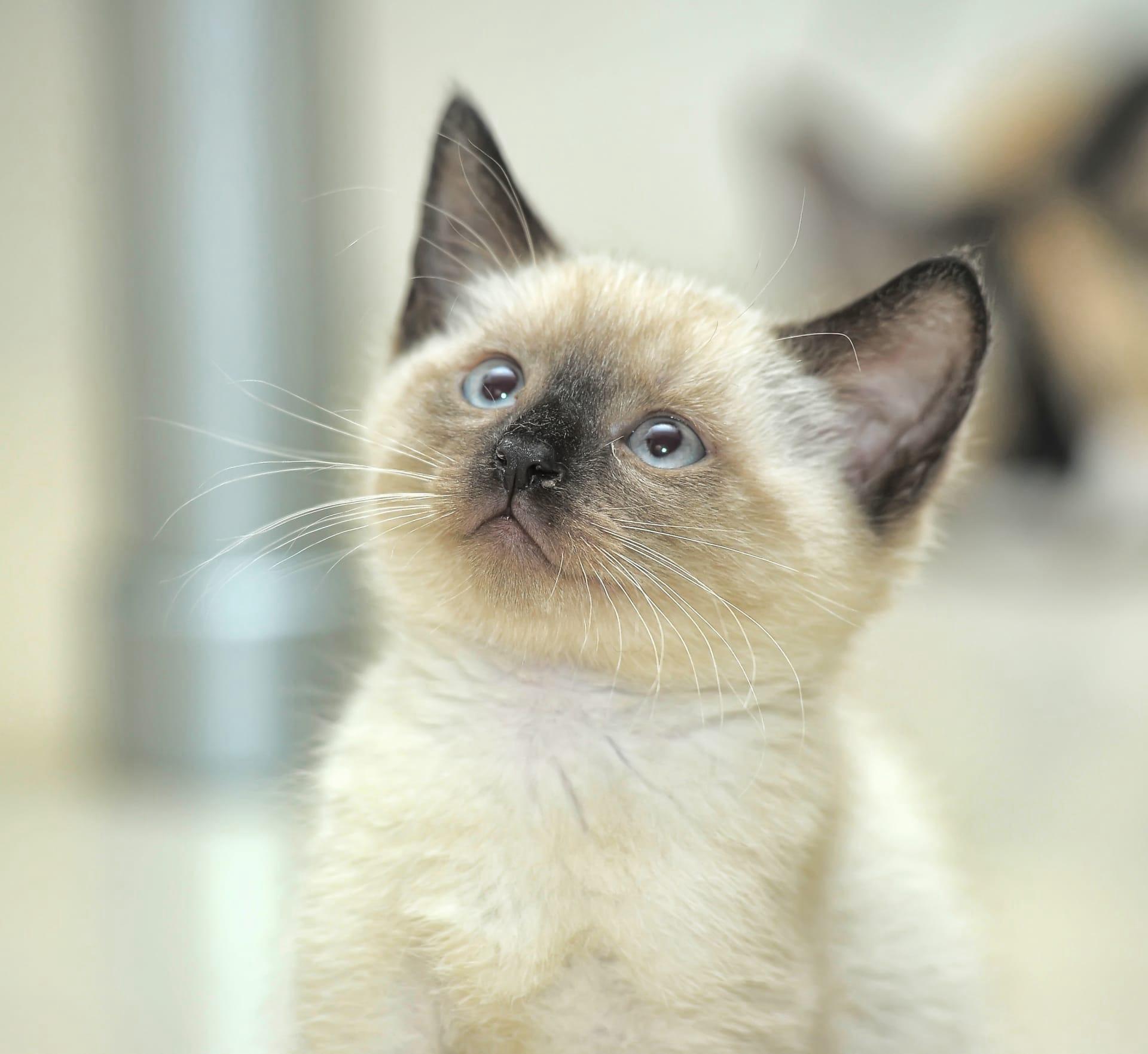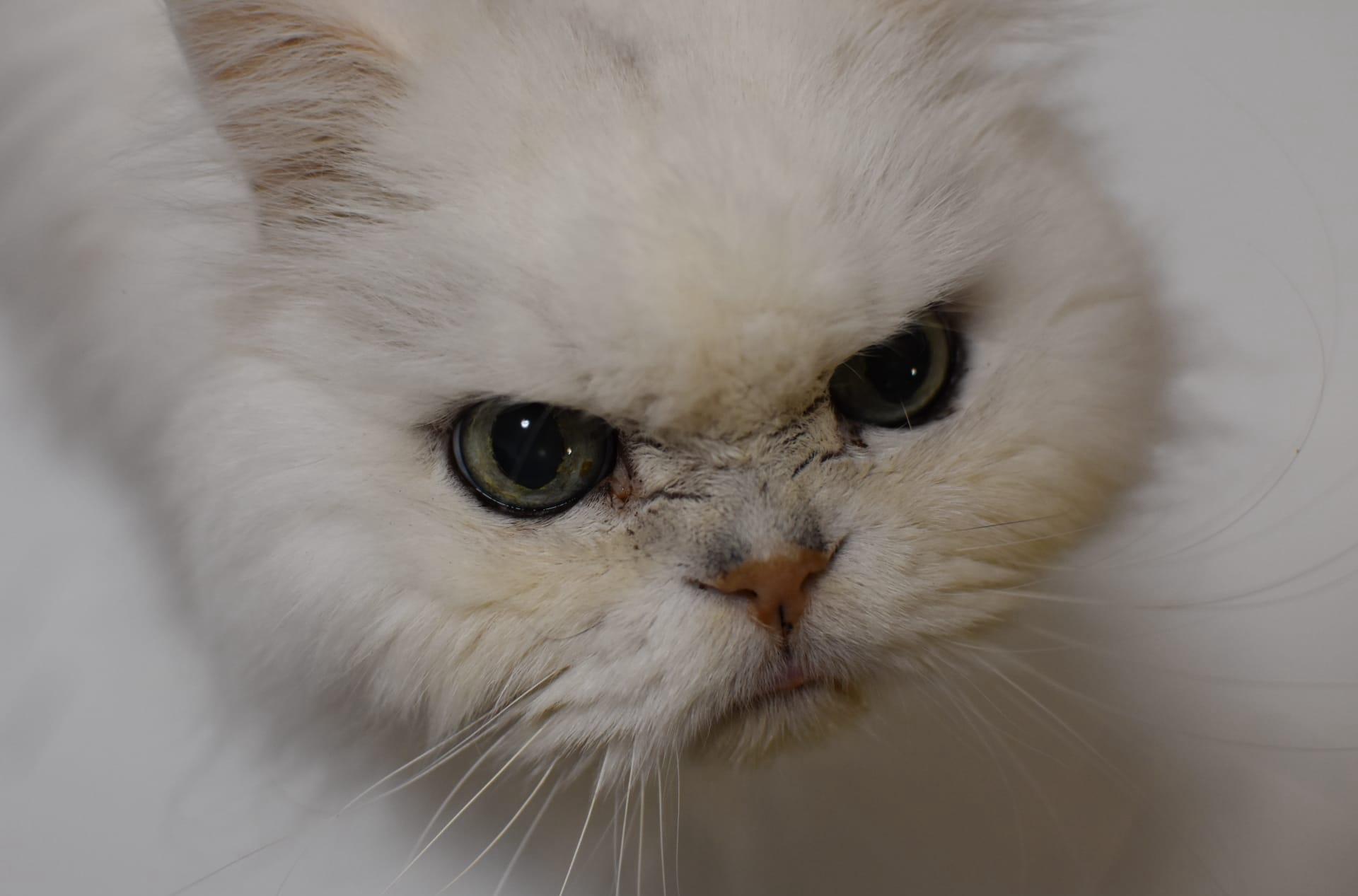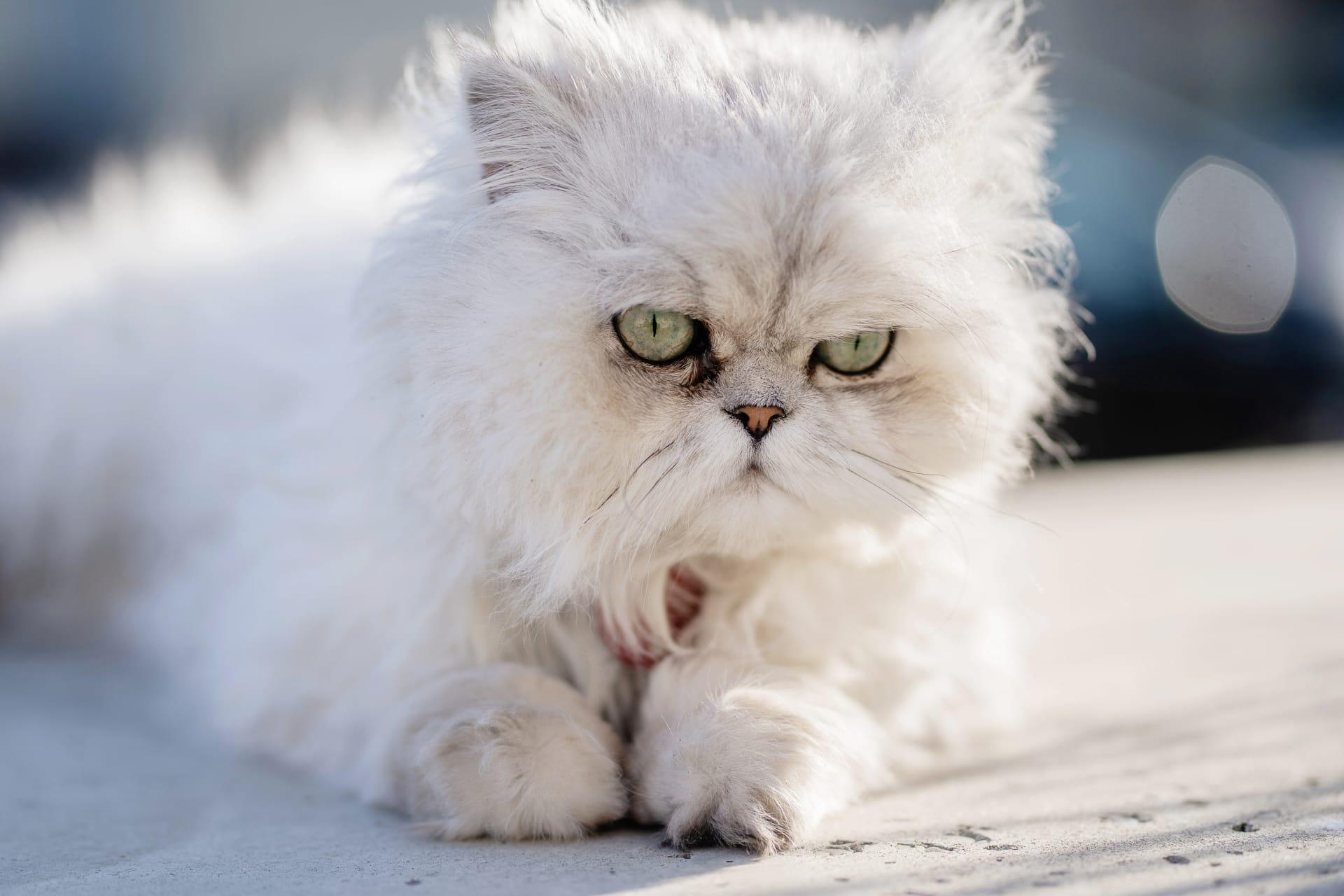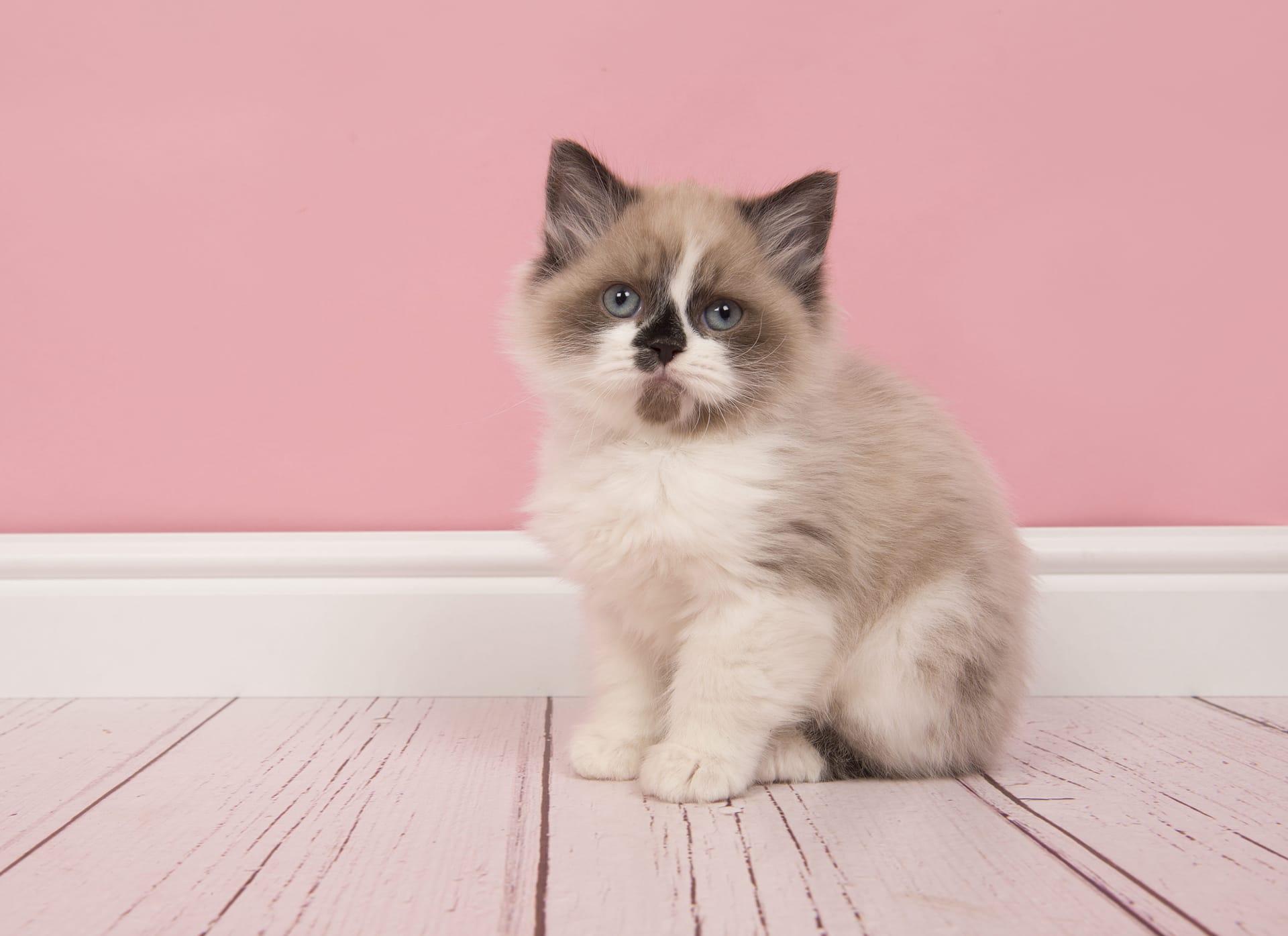1
Himalayan cats, often called "Himmies," are distinguished by their striking blue eyes and long, luxurious fur, a result of crossbreeding Persian and Siamese cats in the 1950s. Their coat colors, primarily in shades of cream, seal, blue, and chocolate, develop in response to cooler temperatures in specific parts of their bodies, leading to their characteristic color-point pattern. This unique feature means that a Himalayan kitten born in a warmer environment may take longer to develop its full colors compared to one born in a cooler setting.
Himalayans have a flat face, also known as brachycephalic, which is a trait inherited from their Persian ancestors. This feature gives them a distinct appearance but also predisposes them to certain health issues, such as respiratory and dental problems. Regular veterinary check-ups are essential to monitor for potential health concerns. Despite these health considerations, Himalayans are known for their calm and gentle disposition, making them excellent companions.

2
The breeding of Himalayan cats was a meticulous effort to combine the best traits of Persians and Siamese. The project, initiated by Dr. Clyde Keeler and Virginia Cobb in the 1930s, aimed to create a cat with the Persian's luxurious coat and the Siamese's striking color points. It wasn't until the 1950s that their efforts came to fruition, leading to the Himalayan's official recognition by major cat registries.
Himalayan cats are known for their playful yet serene nature. They enjoy interactive play with toys and humans, showing a level of intelligence and curiosity inherited from their Siamese lineage. Despite their playful side, Himmies often carry the Persian's laid-back and affectionate demeanor, preferring cozy laps and quiet environments, making them perfect pets for indoor living and families seeking a gentle and loving cat companion.

3
Himalayan cats' coat requires regular grooming to prevent matting and tangles, a commitment stemming from their Persian heritage. Their dense, double-layered fur benefits from daily brushing. This not only helps in maintaining their coat's health and appearance but also fosters a bonding experience between the cat and its owner. Regular grooming sessions are crucial for detecting early signs of skin issues or parasites.
Interestingly, Himalayan cats have a unique vocal trait; they inherit the Siamese's vocal tendencies but often have a softer, more melodious voice. This blend of vocal attributes means Himalayans are not as silent as Persians but are also not as loud as Siamese cats. They use their voices to communicate with their humans, whether it's a greeting, a demand for food, or the desire for attention, making them engaging and communicative pets.

4
Himalayan cats have a robust body structure, with males typically weighing between 9 to 14 pounds and females slightly lighter, ranging from 7 to 11 pounds. Their physical build is a blend of their ancestors' traits – the muscular and hefty body of the Persian, coupled with the elegant and slender features of the Siamese. This combination results in a cat that is both sturdy and graceful.
The lifespan of a Himalayan cat can vary but typically ranges from 9 to 15 years. Their longevity is influenced by genetics, diet, and the level of care they receive. Providing a Himalayan with a balanced diet, regular exercise, and routine veterinary care can help ensure a long and healthy life. It's worth noting that their brachycephalic face requires special attention to dental hygiene and respiratory health to prevent common issues associated with the breed.

5
Himalayan cats are highly sociable and thrive on companionship, either with humans or other pets. They do not do well with long periods of solitude and can develop separation anxiety if left alone for extended times. Introducing another pet as a companion can help alleviate loneliness, though careful introduction is necessary to ensure compatibility and a stress-free environment for the Himalayan.
Despite their luxurious appearance, Himalayans are remarkably adaptable to various living situations. They are as comfortable in spacious homes as they are in smaller apartments, provided they have enough space to play and explore. Their adaptability, combined with their gentle nature, makes them suitable for families, singles, and the elderly alike. However, potential owners should consider the breed's need for regular grooming and companionship when deciding if a Himalayan cat is the right fit for their home.